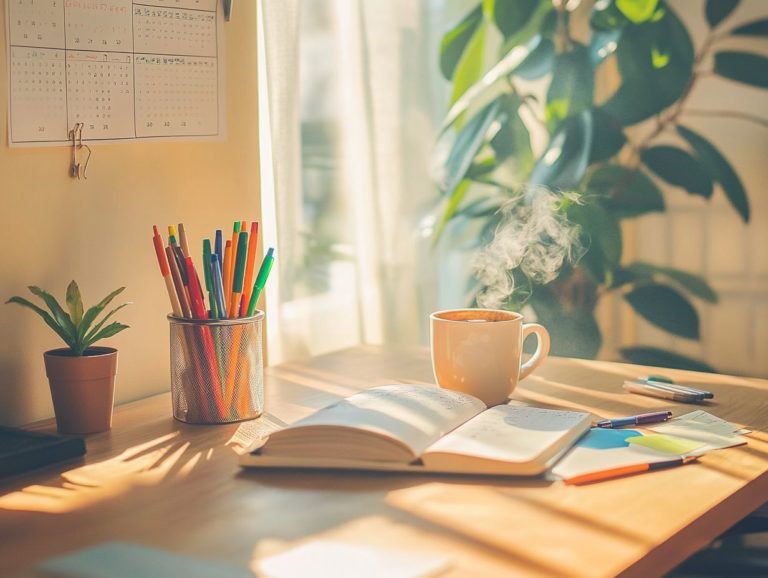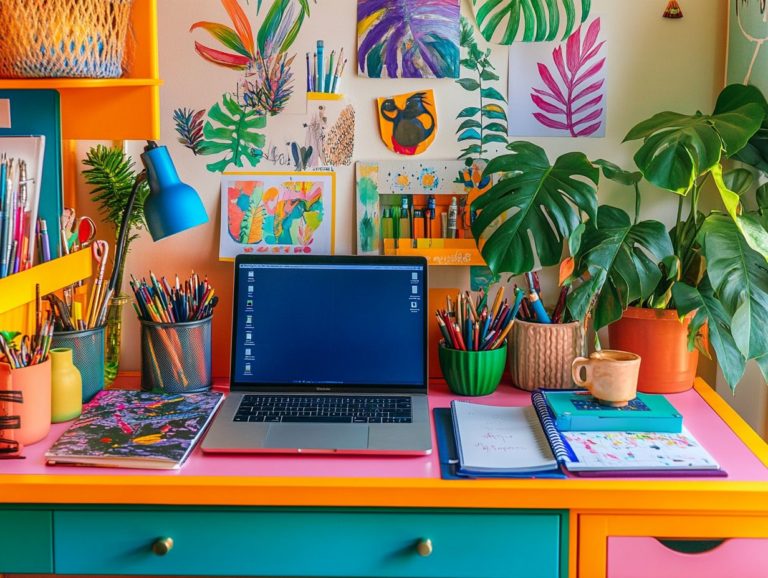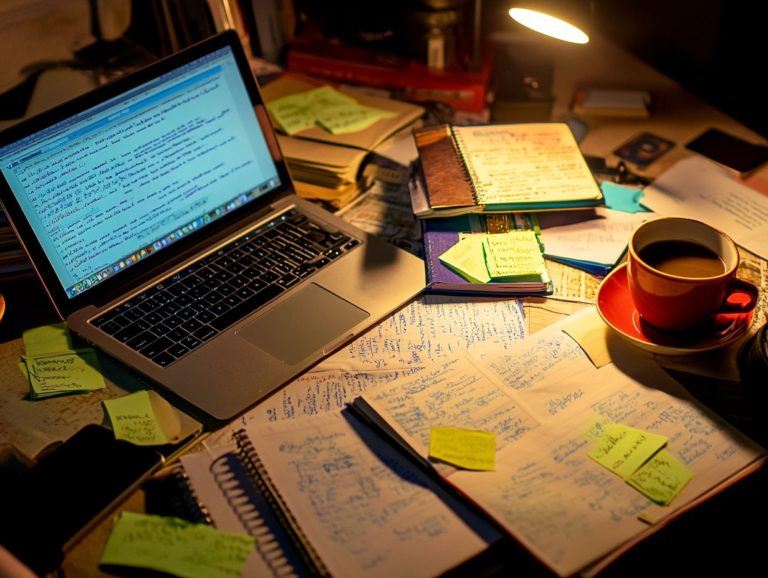memory palaces: a unique study technique
Memory palaces are an exceptional study technique that uses your natural spatial memory. This method invites you to visualize familiar places to organize and retain information efficiently.
In this guide, you ll explore the definition, history, and science of memory palaces. You’ll also uncover their benefits for learning.
Plus, you ll receive a step-by-step guide on how to create your own memory palace. Get ready to unlock your memory potential like never before!
Contents
Key Takeaways:

Memory palaces create a visual mental map to help store and recall information. Based on spatial memory, this technique has been used since ancient times to improve learning and retention.
To effectively use memory palaces, follow a step-by-step guide and incorporate helpful tips and real-life examples.
What are Memory Palaces?
Memory palaces are a captivating technique for boosting memory retention. This method taps into spatial memory and visual associations, helping you organize information effectively.
This technique has historical links to figures like Marcus Aurelius and Seneca the Elder. Over the years, it has evolved to become a key tool in various educational reforms.
As you explore memory palaces, you’ll find practical memorization techniques and creative storytelling elements. These are beautifully illustrated in works like Moonwalking With Einstein and The Victorious Mind.
Definition and History
A memory palace is a visualization technique that allows you to create a mental representation of a physical space for storing and recalling information. This concept dates back to ancient Greece, where philosopher Cicero highlighted the power of spatial memory for effective learning.
Over the centuries, the technique evolved, especially during the medieval period. Scholars adopted it to memorize texts and refine their speaking skills.
Today, cognitive psychology recognizes memory palaces as powerful tools that enhance information retrieval by leveraging your brain’s innate ability to navigate spaces. Memory champions like Dominic O’Brien showcase the technique’s effectiveness in both competitive and everyday learning.
How Memory Palaces Work

The memory palace technique uses spatial memory and recall rehearsal to help you associate information with a familiar environment. This approach enhances memory retention and makes learning more effective.
By creating vivid mental images in a structured space, you can easily navigate the information you wish to remember.
The Science Behind the Technique
The science of memory palaces relies on cognitive techniques that improve your attention span and concentration. This enables you to create vivid mental images for better recall.
By associating information with specific locations in an imagined space, you engage your cognitive resources effectively. This method takes advantage of your brain’s natural abilities to visualize and navigate spaces.
When you focus actively, you retain information more effectively and recall it when needed. Transform abstract concepts into concrete visuals for a deeper understanding of the material!
Benefits of Using Memory Palaces
Utilizing memory palaces presents a wealth of advantages. They significantly enhance your learning and memory retention.
This technique helps you craft personalized memory landscapes. It enriches your cognitive abilities through interactive and engaging memory exercises.
By immersing yourself in this method, you unlock a powerful tool for mastering information and boosting your mental prowess.
Improved Learning and Retention

Memory palaces can elevate your memory retention and learning efficiency. They transform abstract ideas into tangible, memorable experiences.
This technique enables you to visualize information clearly. It promotes a deeper understanding of the material.
By crafting a vivid mental landscape, you can effortlessly navigate through complex subjects. This is especially advantageous in educational reform initiatives that champion innovative teaching methods.
For instance, imagine a student studying historical events. They visualize key dates and figures placed in the familiar rooms of their own home, turning the monotonous task of rote memorization into an engaging mental adventure.
Memory challenges often encourage you to embrace these techniques. They offer rewards for improved recall speed or accuracy.
This not only motivates you but also integrates memory palaces into your study habits. It leads to superior retention results.
Creating a Memory Palace
Creating a memory palace involves using physical spaces and vivid mental images. This helps craft a distinctive memory landscape that enhances your ability to learn and recall information effectively.
Step-by-Step Guide
Begin by selecting a familiar location, like your home. Visualize its areas to store and recall information effectively.
Choose a place you know intimately, such as your childhood home or a beloved caf . This allows you to navigate through it effortlessly in your mind.
Picture each room in vibrant detail. Recall the colors, furniture, and unique quirks that make the space yours.
As you assign pieces of information to specific spots, incorporate personal memories tied to those areas. It makes the data even more memorable.
To boost retention, weave in memory exercises such as:
- Imagining each detail vividly
- Crafting stories around the information
- Utilizing vivid imagery that resonates deeply with you
These techniques enhance your recall. They also transform the process of learning into an engaging and personalized experience.
Tips for Using Memory Palaces Effectively

To truly harness the power of memory palaces for your studies, elevate your approach. Incorporate concentration techniques and infuse creativity into your learning process.
This combination will enhance your engagement and make the experience far more memorable.
Maximizing the Technique for Studying
Maximize the memory palace technique by employing various study methods. Harness effective learning strategies and memory exercises.
Integrate visualization techniques to create vivid mental images linked to the information you wish to remember. This significantly enhances your retention.
Spaced repetition, where you review the material at increasing intervals, further reinforces the connections in your brain.
Practice active recall to test what you’ve memorized. This solidifies your knowledge and boosts your confidence, leading to a more effective overall learning experience.
Real-Life Examples of Memory Palaces
Real-life examples of memory palaces illustrate their remarkable effectiveness. Success stories of memory champions highlight these techniques across various fields.
By exploring these narratives, you can appreciate how memory palaces enhance cognitive abilities and retention.
Success Stories and Applications
Success stories of memory champions showcase how they use the memory palace technique, a method where one visualizes a familiar place to remember information. These champions redefine what the mind can do.
They create detailed mental landscapes to store and recall large amounts of information easily. For instance, many champions design elaborate journeys through familiar spaces, linking vivid images and associations that boost retention.
This powerful method not only wins competitions but also transforms how we learn in classrooms! Teachers are embracing these memory exercises to improve student recall abilities.
The structured approach provided by memory palaces helps learners from diverse backgrounds excel academically. This approach makes learning engaging and effective.






